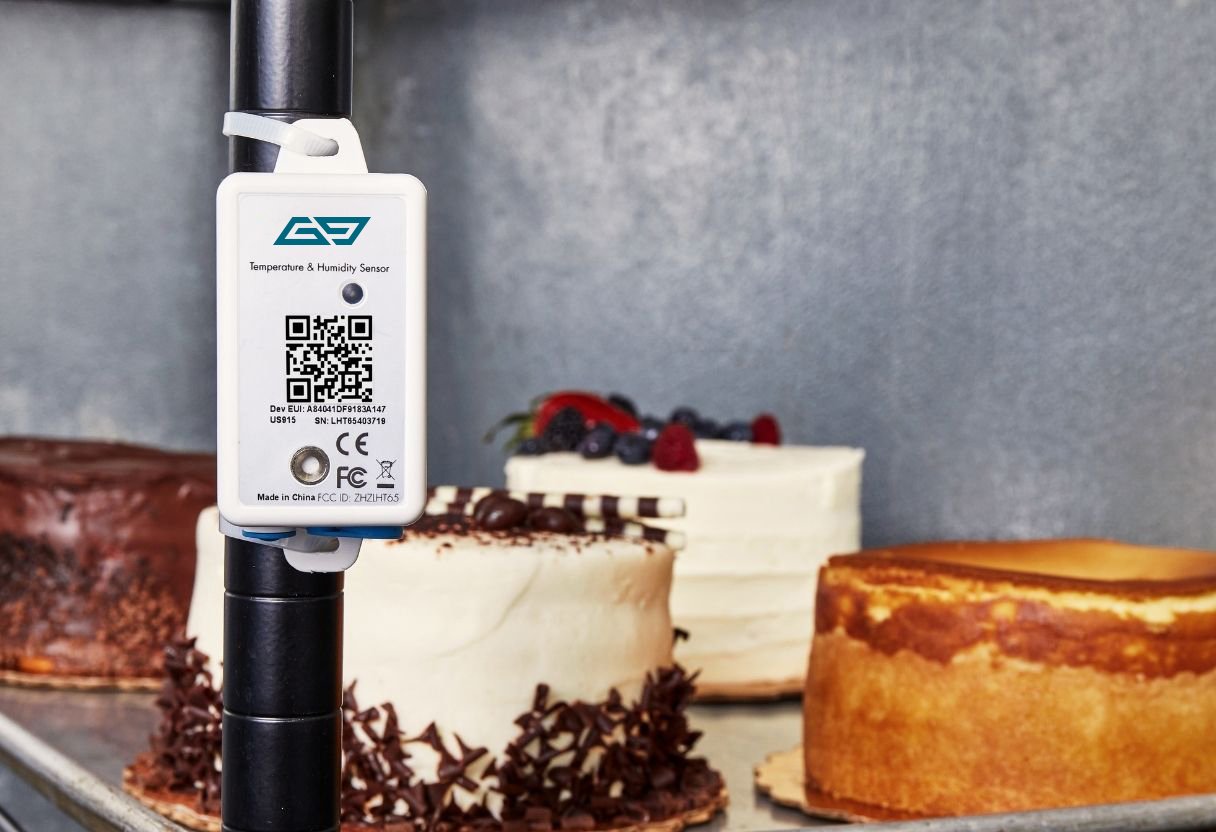How Relative Humidity Sensors Ensure the Longevity of Your Inventory

To prevent the contamination of food, businesses must regularly inspect and evaluate cold storage spaces for safe holding conditions. This includes monitoring humidity to ensure that there are no risk factors that could lead to food spoilage.
While monitoring and recording temperature is mandatory for compliance with local health codes, humidity often is not. Therefore, the evaluations your team performs may not always provide an accurate picture of the holding conditions of your inventory. Failing to observe excess humidity can result in serving food in substandard conditions or necessitating throwing food away.
Fortunately, humidity-induced food spoilage and food waste are preventable by monitoring your storage conditions with wireless, relative humidity sensors like GlacierGrid.
What is relative humidity and what causes it?
Perishable items can spoil if held at temperatures over 40°F for periods longer than two hours. To prevent spoilage teams must monitor their storage temperatures to ensure they have not surpassed that threshold.
However, temperature is not the only factor that can cause spoilage. Relative humidity refers to the measurement of water vapor in the air within a given space. Humidity-related spoilage occurs when moisture levels in cold storage reach the dew point.
The dew point occurs when high humidity combines with warm temperatures, creating condensation on the surfaces of food items. At the dew point, the higher the relative humidity, the more moisture accumulates on your inventory.
The most common cause of excess moisture in cold storage is the seepage of warm moist air. In this context, seepage pertains to the entrance of moisture into holding areas. Seepage can occur due to:
- Rapid opening and closing doors during service
- Cracks in the frame of cold storage units
- Broken seals and gaskets
How relative humidity affects food service
Humidity is known to create spoilage in stored inventory. However, the spoilage resulting from humidity may be less apparent than that caused by temperature.
Wilting is one of the primary forms of humidity-induced spoilage. Wilting occurs when inventory reaches the dew point. These occurrences result in soggy or slimy items with poor texture and taste and can indicate your inventory is unsafe to serve and must be discarded.
Though discarding spoiled inventory may protect your customers, it is damaging for your bottom line. It's no secret that 30% of an average restaurant's revenue is spent on ingredients, while restaurants waste 50,000 lbs of inventory per year.
By implementing practices that help keep food fresh longer, you can save significant amounts of money and prevent food waste.
Humidity sensors prevent spoilage and food waste
One of the best ways to prevent food spoilage in cold storage is to continuously monitor the conditions in these spaces continually. Unfortunately, manual humidity monitoring devices are not standard in food service, leaving teams with only visual cues to work with.
Thankfully, a new generation of digital devices makes it possible to monitor your humidity in real-time. Wireless relative humidity sensors, such as GlacierGrid, allow you to view and record the relative humidity in your cold storage spaces accurately and consistently.
Designed to protect your inventory
GlacierGrid enables teams to take proactive measures to mitigate the danger to their inventory. With GlacierGrid you can:
Alerting: Keep tabs on your location's cold storage with real-time humidity alerts.
Actionable Reports: Ensure you have the documentation required to comply with local health regulations with GlacierGrid’s full suite of reporting capabilities.
Easy to Use and Set-Up: Forget time-consuming third-party installation. Our temperature monitoring system is ready to go in 10 minutes or less.
GlacierGrid's relative humidity sensors
With the ability to monitor your cold storage with a tap of your phone, you will no longer need to worry about facing the issues caused by excess humidity events. GlacierGrid manages your cold storage to offer better control of your inventory, so you can mitigate disaster before it happens. Visit our eComm platform to try GlacierGrid today.







